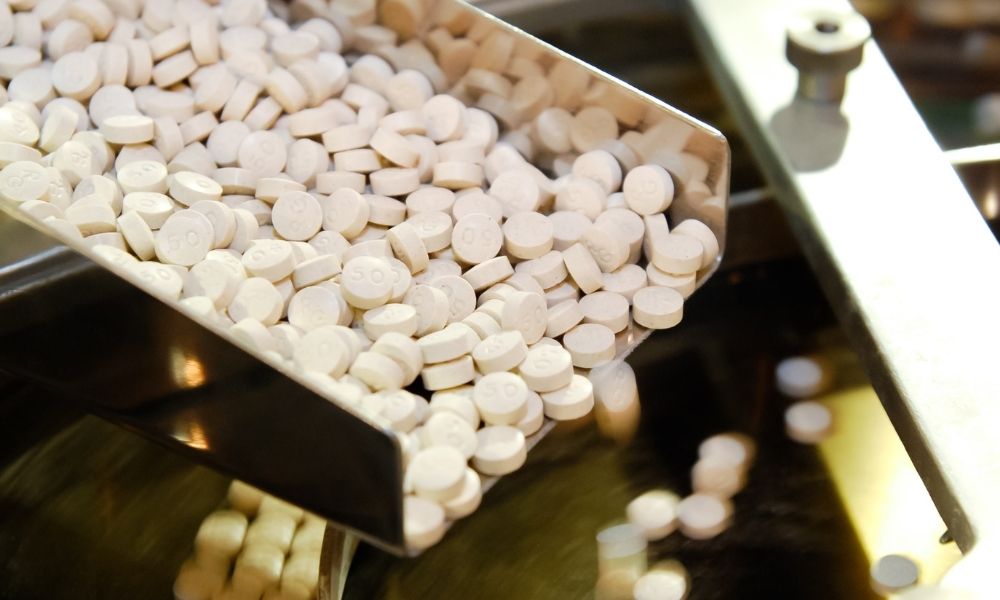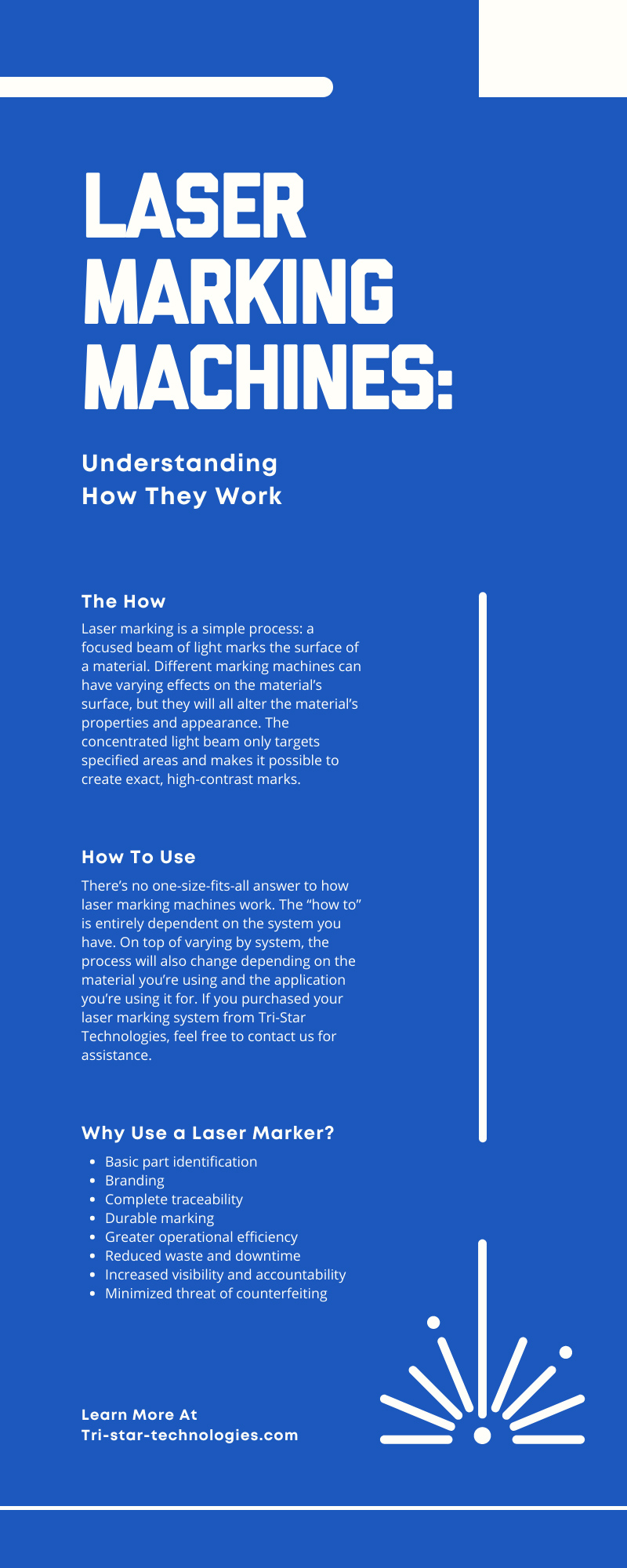Laser Marking Machines: Understanding How They Work

Put simply, laser marking uses a beam of concentrated light to alter a surface permanently. Laser marking has a variety of applications, all stemming from either pulsed, continuous wave, fiber, green, or UV laser machines.
It is a highly efficient process that can be automated to leave permanent marks on several types of materials, from steel to copper to glass to wood to paper. In addition, lasers can be used to write machine-readable data, like barcodes or QR codes. Keep reading for a better understanding of how laser marking machines work.
The How
Laser marking is a simple process: a focused beam of light marks the surface of a material. Different marking machines can have varying effects on the material’s surface, but they will all alter the material’s properties and appearance. The concentrated light beam only targets specified areas and makes it possible to create exact, high-contrast marks.
This makes laser marking perfect for applications where machines need to be able to read information easily. It also provides a permanent mark, so you will never need to repeat the process.
What Are Lasers?
“Laser” is an acronym for “Light Amplification by the Stimulated Emission of Radiation.” You have a laser when an atom is stimulated to release light particles. That energy is measured in nanometers (NM) or wavelengths—a higher wavelength means a more powerful beam.
A UV laser marker has a wavelength of approximately 355NM, making it a low-powered laser. This option is also perfect for marking heat-sensitive materials like glass or plastic. Lasers around this nanometer level are known as “cold lasers” since they produce far less heat than options with higher nanometers.
The lower temperature is ideal for working with soft or organic products since there is a small chance of the material burning. On the other end of the spectrum, you have the fiber laser. At 1070NM, a fiber laser would be too strong for plastic or glass and instead marks metal effectively.
Absorption Spectrum
Unfortunately, the wavelengths that laser marking systems emit don’t look like the movies. There are no thick, colorful beams when you fire up your laser; in fact, most industrial laser systems don’t even emit visible wavelengths. What’s important to understand, however, is that all materials fall somewhere on the absorption spectrum.
What does that mean? It goes back to what we were talking about before with UV and fiber lasers. While a material like steel would react in the way you want to a fiber laser, a UV laser would have no effect. Your material’s absorption spectrum is the most important factor in choosing what system you require.
Fiber and CO2 Systems
As we mentioned, fiber lasers are ideal for strong materials, like metals. With a wavelength of approximately a micrometer, most metals react well to a fiber laser. On the other hand, gas-state lasers are ideal for use with organic materials. The most ubiquitous gas-state lasers are CO2 lasers—while organic materials react well to them, metals do not.
Different Processes, Different Possibilities
How you want to use your laser will also play a role in the system you need. Your ultimate goal may be to fit the marking process into a particular timeframe, or you may not care about that as much as millimeter-precise results.
Laser Engraving
Laser engraving is probably the process you think of when you picture laser systems. It literally engraves deep marks into your material by disintegrating part of the surface. Many vehicles require laser engraving to add the VIN—this process is durable and difficult to falsify, making it perfect for such a critical task.
Engraving is also the go-to process if you’re planning on subjecting the material to any aggressive post-treatments, such as shotblasting.
Laser Etching
Laser etching is the preferred process if you need high-contrast marks at high-speed. The laser melts some of the surface material to produce high and low bumps. This process is ideal for etching black and white marks into surfaces.
Laser Annealing
Laser annealing is among the most complicated laser process, as it is non-destructive. Instead of melting or disintegrating the surface, annealing instead causes a chemical change just under the surface of your material. Some products need to maintain their structural integrity, and annealing makes that possible. While it is a slower process, it also produces the best surface finish of all the processes.
Laser Ablation
Laser ablation is typically used to remove paint from the surface of a material rather than the material itself. This allows the user to add a barcode or other identifier quickly without needing the power to etch metal.
Pulsed Beams for Higher Energy Density
Lasers can either have a pulsed or continuous beam—they work exactly how it sounds. When a beam is pulsed, it has higher peaks of energy, but with the same laser power as a continuous beam. If you have an application requiring higher power density, a pulsed beam is the way to go.
How To Use
There’s no one-size-fits-all answer to how laser marking machines work. The “how to” is entirely dependent on the system you have. On top of varying by system, the process will also change depending on the material you’re using and the application you’re using it for. If you purchased your laser marking system from Tri-Star Technologies, feel free to contact us for assistance.
Regardless of the system you’re using, be sure to follow all the safety guidelines outlined in the manual. Luckily, a variety of preventative measures like safety enclosures make laser marking a relatively safe process.
Why Use a Laser Marker?
There are several benefits to using laser marking for a variety of industries, including:
- Basic part identification
- Branding
- Complete traceability
- Durable marking
- Greater operational efficiency
- Reduced waste and downtime
- Increased visibility and accountability
- Minimized threat of counterfeiting
How Our Machines Are Different
All our laser markers are non-destructive devices—no melting or disintegration. This is perfect for any industries that require precision, as we’ve worked with medical facilities, automobile manufacturers, and aerospace applications.
Now that you understand how laser marking machines work, let us help you indelibly and non-destructively mark your products with our systems.



